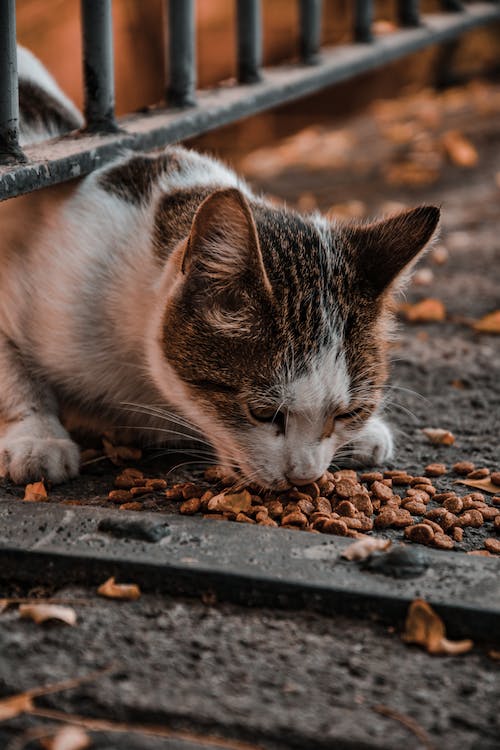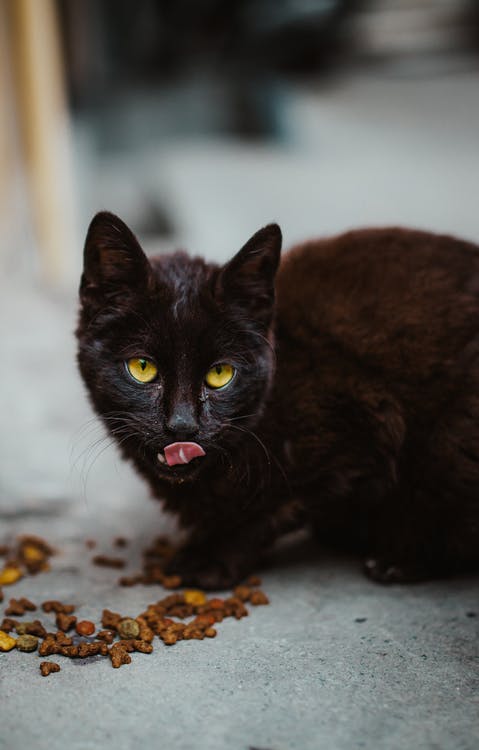
How to Choose Dry Cat Food?
Dry cat food is a convenient and balanced food for your cat. Although you can choose to feed your pet with homemade food, cat kibbles (dry cat food) are a quick snack with all the essential nutrients created in labs by veterinarians. Let’s see closer below.
Cat food: what is it made of?
Cat food is made from:
– raw materials of animal origin;
– cereals;
– mineral supplements;
– vitamins;
– texturizing agents.
These different components are dehydrated and assembled in the factory. Then they are cooked, cut, dried, and finally coated with fat to be more appetizing. Depending on the brand (and the price), the composition of the kibbles varies on the proportion of:
– proteins (25 to 42%);
– fat (10 to 25%).
How to choose cat food?
To choose kibble for your cat, read the label carefully. Kibble manufacturers are often quite mysterious about their composition, but here are some essential elements to be aware of:
– Animal proteins: choose the kibbles that contain the highest proportion.
– Meat or fish: choose kibbles that contain fresh meat and fish and avoid those that contain dehydrated meat or animal by-products.
– Cereals and fats: these should be provided in the lowest possible proportions.
Different types of cat food
There are many different types of cat food, adapted to the age and other specificities:
– for kittens;
– for adult cats;
– for senior cats;
– for sterilized cats;
– light kibble;
– for long-haired cats;
– “Medical” kibbles (kidney, liver, skin, heart problems, etc.).
Advantages and disadvantages of dry cat food

Dry food is the most common type because it has many advantages. However, it is important to know its disadvantages as well.
Advantages:
The price
Dry cat food is the most economical commercial food. Like kibble, they are developed by the veterinary nutritionists of the major pet food brands. They cost 2 to 4 times less than cat food for the same nutritional value.
Oral hygiene
Kibbles also have the advantage of contributing to eliminating tartar by their abrasive action on the teeth.
Disadvantages:
Palatability
One of the disadvantages of kibbles is their lesser palatability compared to homemade food or mash. Some fussy cats may be reluctant to eat kibble. In this case, you can add a little food to the kibble. But it is recommended to ask your veterinarian for advice to avoid overfeeding.
Kidney problems
Kibbles do not provide water to the cat at all. Since your cat is not a big drinker, it may develop kidney problems such as recurrent cystitis. In this case, you’ll need to find a way to get your cat to drink enough, such as a water fountain.
Where to buy cat food?
You can buy kibble in 3 types of sales channels, where the kinds of kibble offered will not be the same:
– classic distribution (supermarkets, hypermarkets…): basic croquettes;
– specialized distribution (pet shops and garden centers): high-end and therapeutic kibbles;
– veterinarians: therapeutic kibbles.
Which price?
The price differences and also in quality can be big between the brands:
– The most expensive kibbles ($8 to $9/kg) result from years of research by major brands.
– Hard-discount kibbles (about 1.5 $/kg) do not detail their composition. This means that you may be giving your cat unsuitable kibble.
Read more:
Food category:
- How to Feed a Senior Cat;
- How to Feed Your Cat;
- How to Feed Pregnant Cats;
- How to Feed a Neutered Cat;
General category:
– 6 Easy Steps to Bathe Your Cat;






1 thought on “How to Choose Dry Cat Food?”